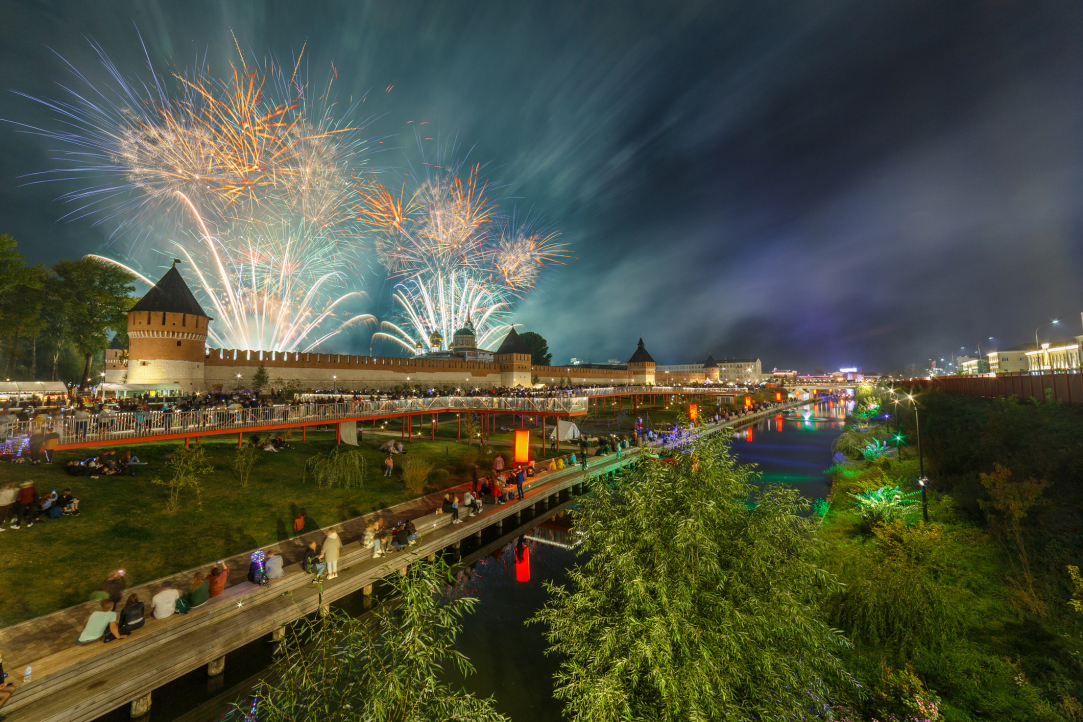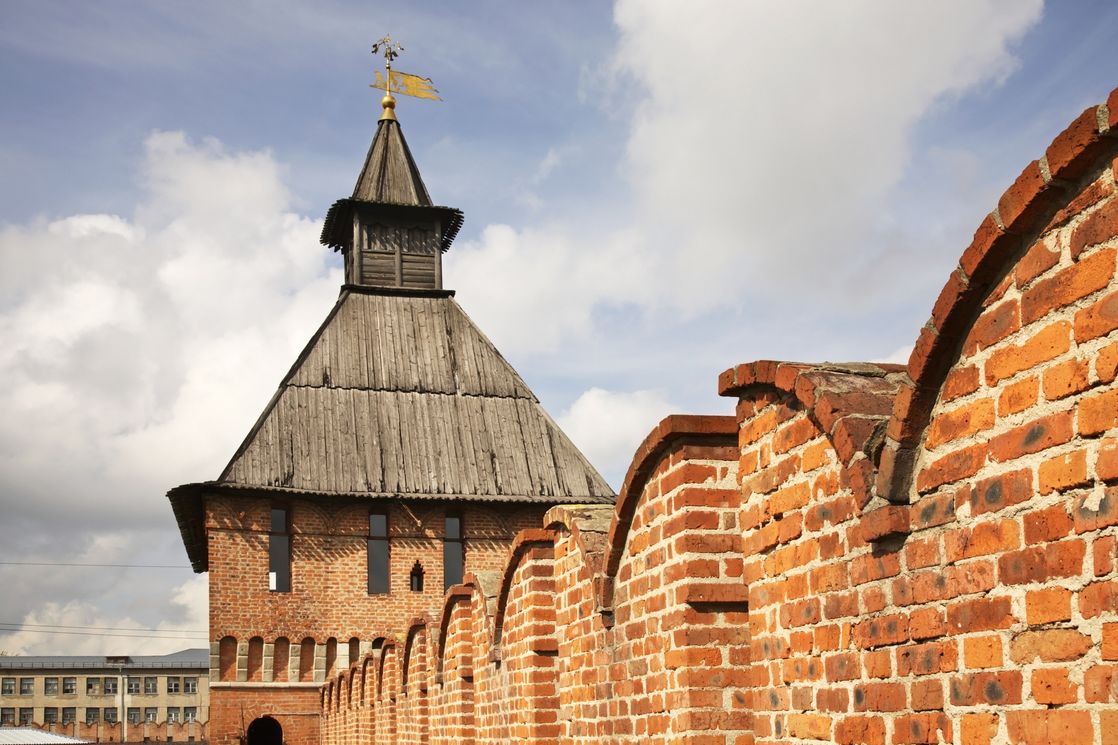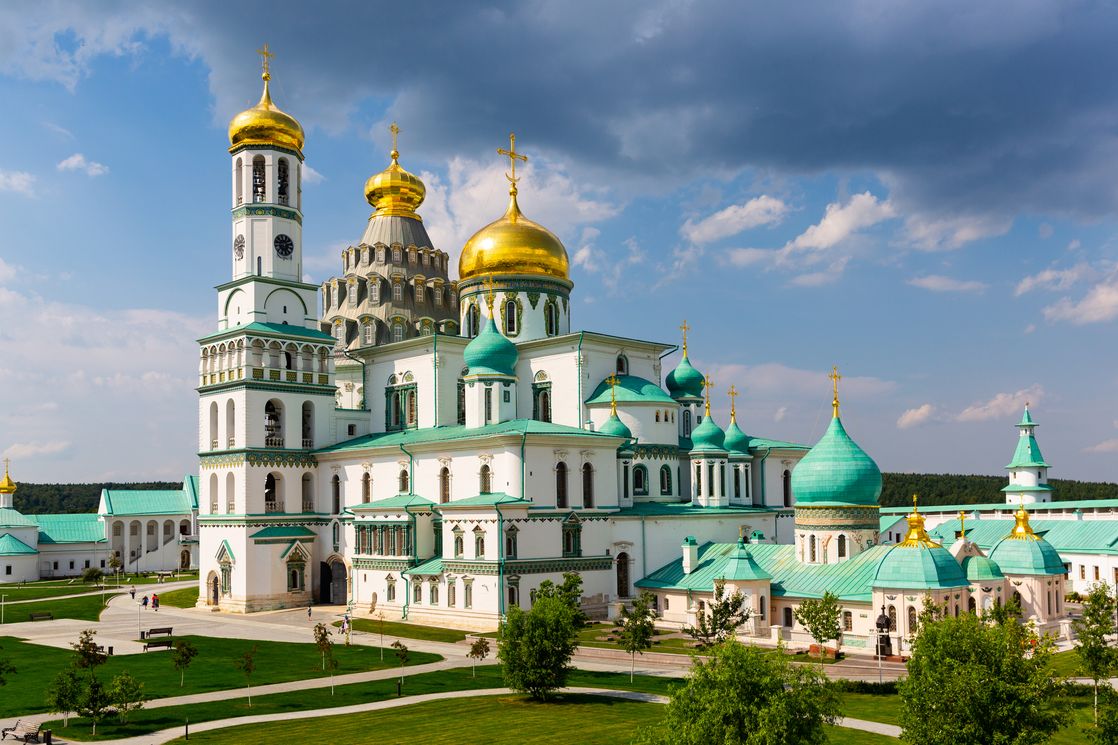Tesla Coils and Yasnaya Polyana: Ideas for Short Trips around Moscow

Summer is coming, and it’s the best season for traveling in Russia. The HSE Travel student organisation has curated a collection of cities accessible within a few hours from Moscow, alongside insights into their prominent tourist attractions.
Tula
How to get there
The most convenient way to get from Moscow to Tula is by the Lastochka high-speed train departing from Kursky Railway Station. The journey will take a little more than two hours. It is also possible to get there by regular commuter trains, with a travel time of 3.5 hours.
Tula is a city that combines an array of cultural, educational, and recreational opportunities. It is often referred to as a Fortress City, a Hero City, a Cannon City, and the birthplace of samovar and pryaniki—Russian gingerbread. However, this merely scratches the surface of what Tula has in store for tourists.
Any tour of the city should begin with a visit to its key landmark, the Tula Kremlin. Here you can immerse yourself in the spirit of antiquity and learn more about the history of both the city and the entire country.

Another must-see in Tula is the Defenders of the Fatherland Sky memorial devoted to pilots who fought in the Great Patriotic War. Visitors to the memorial grounds can see three aircraft and a replica showcasing a combat episode from the frontline life of Ivan Vishnyakov, Hero of the Soviet Union.
For enthusiasts of Russian classics, a truly inspiring experience would be a visit to the Yasnaya Polyana estate, situated 16 km from Tula. The centrepiece of the estate is the manor where the renowned writer Lev Tolstoy was born, lived, and created his masterpieces. Yasnaya Polyana is also the birthplace of Tolstoy's immortal literary works, including the globally acclaimed War and Peace.

The museums dedicated to Tula's renowned pryaniki and samovar have gained widespread recognition, becoming a tradition for tourists to explore and enjoy. However, one should not overlook the Tula State Museum of Weapons, as the city holds the title of being the weapons capital of Russia. The museum's collection originated in the 18th century and was at some point housed in the Moscow Armory, but eventually found its way back to Tula in the late 19th century, where it now resides in the restored museum. Over the subsequent decades, the museum expanded its collection significantly, and in the 20th century found its home in a new building designed in the shape of a warrior's helmet.
HSE international student Lý Trang visited Tula in 2022 and shared her impressions with Life in Moscow.
Kaluga
How to get there
You can get to Kaluga by regular commuter train (3.5 hours) or by express train (2.5 hours), both departing from Kievsky Railway Station.
Kaluga is often hailed as the 'cradle of cosmonautics', owing to its association with Konstantin Tsiolkovsky, whose visionary ideas propelled us towards remarkable breakthroughs and paved the way for the exploration of outer space.
One of Kaluga's key attractions is the State Museum of the History of Cosmonautics named after Tsiolkovsky. On June 13, 1961, Yuri Gagarin laid the foundation stone of the Cosmonautics Museum.
Presently, the museum complex spans an impressive area of 12,500 square meters, housing over 500 exhibits that offer insights into pivotal space exploration programmes. Additionally, the museum's collection proudly boasts original examples of rocket and space technology.

In front of the museum stands a model of the Vostok launch vehicle, which is not merely a replica of the rocket that carried Yuri Gagarin on his historic first spaceflight but a fully functional hull designed as a backup in case the first one encountered any issues.
Kolomna
How to get there
Kolomna is situated close to Moscow, a mere 113 kilometres away. It is reachable within a relatively short travel time of 1.5 to 2 hours by taking the M5 highway. There are numerous gas stations and cafes along the highway, ensuring a comfortable journey.
Trains departing from Kazansky Railway Station provide another transportation option to reach Kolomna, with the destination station being Golutvino. The travel time can vary from 1.5 to 3 hours depending on the type of train.
We highly recommend commencing your tour with a visit to the Kolomna Kremlin, an enduring fortress that has stood resilient against invaders throughout history. Its stone walls run along the Moskva and Kolomenka rivers. You can climb up to the observation deck atop the Marinkina Tower. According to legend, it was within its confines that Marina (Marinka) Mnishek was imprisoned, giving her name to the tower. Inside the tower, one can see the tsarina's reconstructed room, and the observation deck upstairs provides a marvellous view of the city.

Then you can visit the Nativity of the Virgin Bobrenev Monastery which was founded after the Battle of Kulikovo. It is believed that the military commander Bobrok donated most of the money used in the construction of the monastery, which was then named in his honour. The temple within the monastery boasts remarkable acoustics, creating an awe-inspiring ambiance for church singing if you are fortunate enough to hear it.
After the cultural programme, you can add a gastronomic experience to your trip by visiting the food museums of Kalachnaya (bakery) and Kolomenskaya Pastila (apple marshmallow).
The latter is particularly popular with tourists, as it offers them 'a taste of Russia', according to museum staff. At the ancient estate of the merchant Suranov, you will not only learn about the traditional Russian delicacy but will have the opportunity to savour it first-hand. A visit to the museum is guaranteed to leave a lasting impression, as the tasting takes place outdoors in the inner garden of the estate. The courtyard, adorned with meticulously maintained apple trees, sets a picturesque backdrop, while elegant vintage tables and chairs contribute to the enchanting atmosphere.
Kolomna is a beautiful city, where simply strolling through its streets and marvelling at the sight of ancient buildings can be a delightful experience.
In this coverage by HSE University Life, HSE employee Alyona Mazunina, who was born in Kolomna, shares some tips on visiting her hometown.
Serpukhov
How to get there
You can take a commuter train from Kursky Railway Station in Moscow and reach Serpukhov in approximately 2 hours. Another option is to take a bus from Lesoparkovaya Metro Station in Moscow and shorten the travel time to around 1.5 hours.
Serpukhov boasts a rich history; it served as the centre of the appanage principality during the 14th and 15th centuries. Several unique cultural monuments have been preserved since that time.
These include the city's historical centre, featuring the foundation and two surviving wall fragments of the ancient kremlin (fortress) built entirely of white stone. Most other fortresses of that time used white stone as an auxiliary rather than primary construction material. In the second half of the 15th century, bricks largely replaced white stone. However, in Serpukhov, white stone remained readily available and continued to be used in construction until the mid-17th century. The Trinity Church is situated on what was once the inner grounds of the kremlin. Its current structure was built in 1696, although its foundation dates back to the 14th century.

As our second recommendation, we suggest visiting the Vysotsky Monastery, one of the oldest around Moscow and one of the nine monasteries founded by St Sergius of Radonezh. The Vysotsky Monastery is home to numerous revered shrines that hold deep significance for believers. The most renowned of them is the Inexhaustible Chalice icon, which is believed to help those seeking recovery from alcoholism and drug addiction. The Vysotsky Monastery serves as the final resting place for members of distinguished Russian noble families, such as the first Russian chancellor Gavrila Golovkin and the navigator and hydrographer Fyodor Soymonov.
The Serpukhov History and Art Museum is a unique cultural monument and home to the most extensive art gallery in the Moscow region. The museum originated from the private art collection of an esteemed local merchant, Anna Marayeva, and is now housed in her former mansion. The museum boasts an impressive collection of paintings, graphics, and sculptures by renowned artists of the early 20th century.

In addition to its cultural appeal, the vicinity of the city offers visitors captivating natural attractions, such as the Prioksko-Terrasny Nature Reserve, the only one in the Moscow region. People come here to see the European wood bison, whose wild population faced extinction worldwide in the early 20th century. However, in recent decades, scientists have been working to restore and revive this magnificent species. The Road to Bison tour is held on weekends, starting every hour between 9 am and 4 pm. The reserve offers several additional hiking trails, each equipped with interactive stands providing information about the local animals and birds.
Istra
How to get there
Istra can be reached by car or by commuter train departing from Kursky and Rizhsky railway stations from 5 am to midnight. The travel time to the destination stations of Rumyantsevo, Volokolamsk or Novoyerusalimskaya is slightly less than 1.5 hours.
The main attraction in Istra is the renowned 'Russian Palestine', a complex built in the 17th century according to the visionary plan of Patriarch Nikon. It was intended to symbolise Russia's significant role as the guardian of 'the law and the word of the Lord', representing the earthly heritage of the Heavenly King. This complex serves as a spatial representation of the Holy Land, with each element of the ensemble designed to correspond to a significant shrine in Christian Palestine.

At the heart of the New Jerusalem complex stands a hill that serves as the conceptual and compositional centre, symbolising the biblical Zion. The Voskresensky Monastery, established in 1656, has been constructed in architectural forms that pay homage to the iconic Church of the Holy Sepulchre in Jerusalem. The areas surrounding this Zion near Moscow are designed to mirror the evangelical locations of Eleon, Galilee, and the Garden of Gethsemane, while the river Istra, flowing through the city, serves as a reminder of the revered River Jordan.
The monastery grounds encompass a multitude of temples, including the magnificent Temple of the Entrance of the Lord to Jerusalem (built in the 1690s) and the revered hermitage of Patriarch Nikon (constructed in the 1660s). These architectural gems attract not only pilgrims but many enthusiasts of Russian history and architecture.

Adjacent to this location is the New Jerusalem Museum, which stands as one of the largest museums in the Moscow region. The New Jerusalem Museum is a contemporary exhibition space that allows visitors not only to view the historical exhibits but to delve deeper into their history and significance using multimedia technology. The permanent exhibition of the museum showcases a remarkable collection of church and secular Russian art spanning the 16th to the 20th centuries. Visitors can explore a collection of paintings, icons, and sculptures, and the 'Special Storeroom' of the museum houses an assortment of decorative and applied art objects, such as embroidery, jewellery, enamels, and church household items.
A dedicated exhibition within the museum is devoted to Patriarch Nikon and the history of the New Jerusalem Complex. The museum also regularly hosts a diverse range of temporary exhibitions, such as 'Under the Sign of Rubens: Flemish Painting of the 17th Century from Museums and Private Collections in Russia' that ran until May 14, and 'The Yusupov Collection: Second Edition. Paintings from the Collection of the Arkhangelskoye Museum-Reserve' that will continue until October 8.

Another captivating site is the 'Tesla Coils' testing facility of the High-Voltage Research Centre, originally built in the 1970s and maintained by the Moscow Power Engineering Institute. The futuristic cascade of transformers and the towering 30-meter Arkadiev-Marx generator, although rarely in operation, hold a special allure for enthusiasts of unique and captivating photo shoots.
Additionally, a visit to the Museum of Wooden Architecture is highly recommended while in Istra. Situated on the outskirts of the New Jerusalem Garden of Gethsemane, it showcases an open-air collection of rare monuments of wooden architecture, which are exceptionally precious due to the delicate nature of the material. One can spend time here marvelling at remarkable exhibits such as an authentic relocated wooden mill or an exact replica of an 18th-century tent chapel.
Photos: iSTOCK

